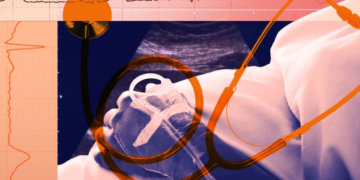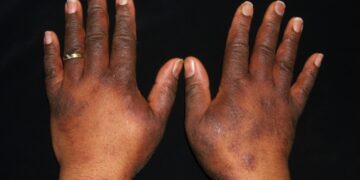March 3, 2025 Story by: Editor
Despite advances in health care, structural racism and health disparities continue to influence medical practices—sometimes in ways health care providers may not even recognize. A recent study published in JAMA Network Open on Feb. 28, 2025, reveals that the continued use of race-specific equations in diagnosing children with asthma symptoms can hinder the detection of reduced lung function in Black children.
“This finding is important because when these children are not identified as having reduced lung function, they may not receive further testing. This can lead to under-diagnosis, delayed treatment, and long-term lung health issues,” said Dr. Gurjit Khurana Hershey, MD, Ph.D., senior author of the study.
The Problem With Race-Based Equations in Asthma Diagnosis
Diagnosing asthma in children involves multiple steps. Physicians or parental guardians first report symptoms, followed by pulmonary function tests to measure lung performance, including forced expiratory volume in one second (FEV1) and forced vital capacity (FVC). If a child’s lung function appears abnormal, further diagnostic tests are conducted.
A key issue lies in how these tests assess expected lung function. Spirometers—devices used to measure lung function—calculate expected values based on a standard equation that incorporates age, sex, body size, and race. This approach stems from outdated studies that suggested white individuals have “naturally higher” lung function than other racial groups. As a result, lung function measurements are adjusted by 10–15% for Black individuals and 4–6% for Asian individuals. However, these adjustments fail to consider socioeconomic factors and ultimately contribute to health disparities.
New Race-Neutral Equations Are Underutilized
In 2022, the Global Lung Initiative (GLI) Network introduced updated reference equations for lung function, eliminating race as a factor to minimize disparities. However, these race-neutral equations have not been widely adopted by healthcare providers.
The study, led by first author Wan Chi Chang, MS, found that using the race-neutral equation resulted in a 2.5 to 4 times higher likelihood of Black children with asthma symptoms being identified as having reduced lung function compared to the race-specific equation.
Researchers analyzed data from three cohorts of children in the Childhood Asthma Management Project (CAMP), the Cincinnati Childhood Allergy and Air Pollution Study (CCAAPS), and the Mechanisms of Progression of Atopic Dermatitis to Asthma (MPAACH) cohort. Among the 1,533 children in the study, 21% were Black. When applying the race-neutral equation, 39% of Black children previously classified as having normal lung function were reclassified as having reduced lung function.
Moreover, the race-neutral equation increased the eligibility of Black children for further diagnostic testing by 38–44% in the CCAAPS and MPAACH cohorts. Notably, applying the race-neutral equation to white children had no significant effect on their lung function assessments. These results suggest that race-specific equations overestimate lung function in Black children, leading to under-diagnosis of asthma in this group.
Call for a Universal Race-Neutral Approach
The study’s co-authors advocate for the universal adoption of the race-neutral equation to improve asthma diagnosis and treatment, ultimately helping to reduce health disparities. Moving forward, they recommend further research on how the race-neutral equation performs in measuring lung function across other ethnic groups.
Source: Medical Xpress

















